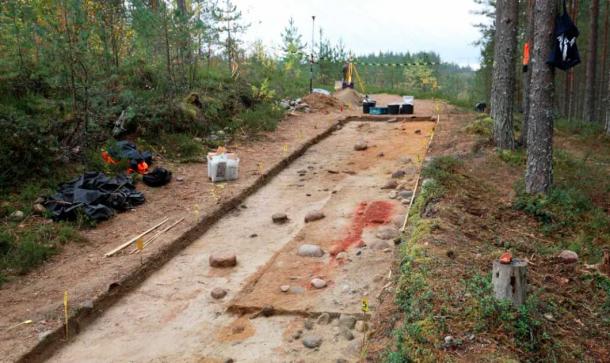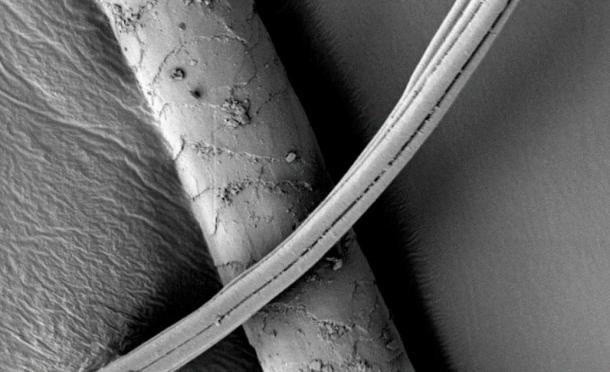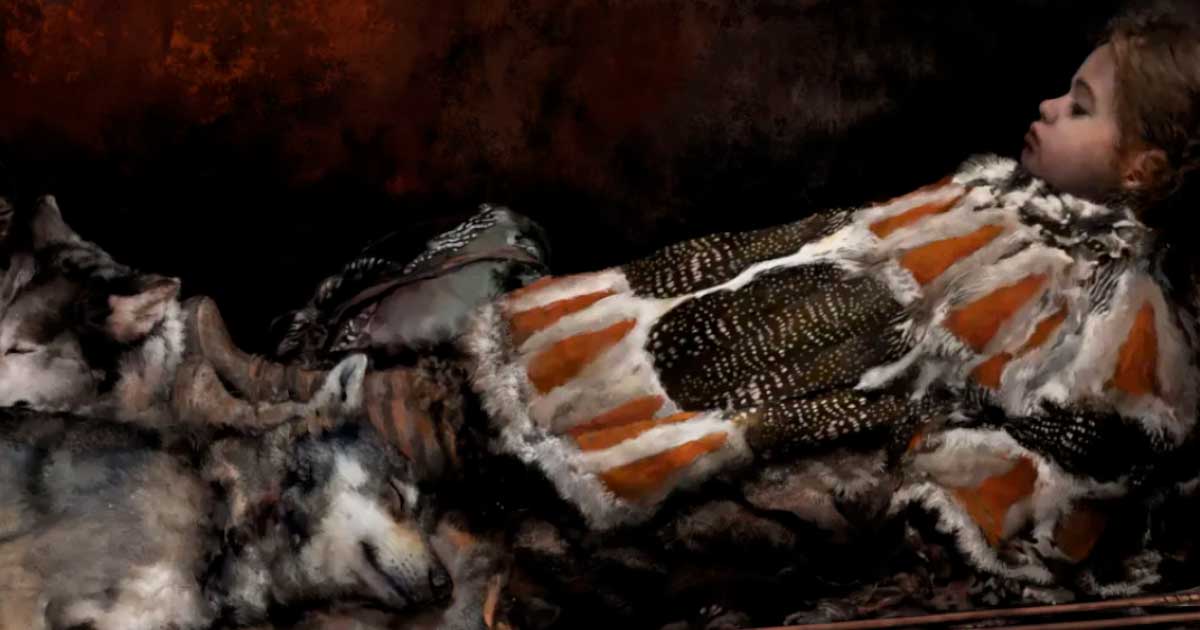Child’s Stone Age Grave in Finland Reveals Nordic Funerary Customs
A Stone Age burial site in Majoonsuo in the municipality of Outokumpu in eastern Finland has provided an exceptional find during an archaeological dig. Buried underneath a gravel road in a forest in Finland, tooth fragments belonging to a child living 6,000 years ago in the Mesolithic period, with animal furs and bird feathers also retrieved from the grave.
Funerary Customs of the Nordic Communities
While the bones of the child did not survive the onslaught of time, this fascinating discovery has shed light on the funerary customs of Nordic communities and is the subject of a new study, published in PLOS One journal. The study has provided valuable insights about burial habits in the Stone Age, showing how ancient Nordic communities prepared the child for the journey after death.
For the purposes of research, they excavated microscopically small fragments of bird feathers, canine and small mammalian hairs, and plant fibers using soil analysis. What makes this find even more remarkable is the fact that organic matter is poorly preserved in Finland’s acidic soil.
Fearing the destruction of the site, the Archaeological Field Services team of the Finnish Heritage Agency examined the site in 2018. What gave the burial away was a deep red ochre color, that has been used in burials and rock art across the world, as the grave was partially exposed at the end of a gravelly sand road.
- Bizarre Burial: Girl With A Bird Skull In Her Mouth
- Slate Stone Age ‘Friendship Rings’ Found in Finland

The red-ochre burial site of the child in Majoonsuo. (Kristiina Mannermaa / University of Helsinki)
Soil Analysis, Hair Fragments, and Weapons
Researchers from the University of Helsinki, led by archaeologist Tuija Kirkinen, wrote in the study that “… only some unburned human enamel fragments remained of the deceased. Based on these teeth, the deceased was a child, less than 10.5 years old.”
Their primary aim was investigating how the highly degraded plant and animal remains could be traced through a soil analysis – 65 soil sample bags were collected for this research. This was carried out in the laboratory of the University of Helsinki, separating organic matter from the samples using water.
The exposed fibers and hair were then put under the scanner, identified with the help of transmitted-light and electron microscopy. The study also employed a unique fiber separation technique, developed during this research, and it will hopefully provide a blueprint for future studies. Three different laboratories searched the samples, scouring for microparticles and fatty acids. The red ocher-stained soil was sieved and gently separated from the origin soil.
- What Comforting Items Did Vikings Have That Are Still the Height of Luxury Today?
- Norse Warrior Took Comfy Duvet (and a Beheaded Owl) to the Afterlife

An electron microscope image of a possible canine hair. (Tuija Kirkinen/University of Helsinki)
The analysis revealed a total of 24 microscopic (0.2-1.4 mm) fragments of bird feathers – 7 of these from the down of a waterfowl, which may have been used to make clothing, perhaps a down coat. One falcon feather fragment was also found, perhaps part of the fletching of arrows that were attached to the quartz arrowhead.
Two transverse arrowheads made of quartz and two possible quartz objects were also discovered, reported the University of Helsinki press release. The shape of the arrowheads and shore-level dating date the burial to the Mesolithic period.

The find material of the grave: Transverse arrowheads abobe: 13x8x3 mm (KM 41572:45), and middle: 15x7x3 mm (:98). Below: Two permanent mandibular incisors (KM 41572:47); (Ilari Järvinen / Finnish Heritage Agency, Archaeological collections and Kristiina Mannermaa / PLoS ONE)
These could have been used to decorate the clothing. In addition, hairs of a predatory canine, a dog or a wolf, and 24 mammalian hairs, were also found at the bottom of the grave. Perhaps a dog was laid at the child’s feet, though this analysis remains unconfirmed.
“The discovery in Majoonsuo is sensational, even though there is nothing but hairs left of the animal or animals – not even teeth. We don’t even know whether it’s a dog or a wolf,” said one of the study authors Kristiina Mannermaa in a statement. “Dogs buried with the deceased have been found in, for example, Skateholm, a famous burial site in southern Sweden dating back some 7,000 years. The method used demonstrates that traces of fur and feathers can be found even in graves several thousands of years old, including in Finland.”
The plant fibers included bast fibers that are either willow or nettle. They were likely part of a larger net used for fishing, a bundle of strings, or a cord used to attach clothes. Interestingly, only one other bast fiber discovery is known in Finland that dates back to the Mesolithic Stone Age.
This is the famous Antrea Net laced with willow bast fibers, currently on display in the National Museum of Finland. The study has also reiterated the importance of soil and the data that can be extracted from just patches of soil.
“The work is really slow and it really made my heart jump when I found minuscule fragments of past garments and grave furnishings, especially in Finland, where all unburnt bones tend to decompose,” concluded Mannermaa.
Top image: An artist’s impression of the child buried in Majoonsuo during their life. Source: Tom Björklund / University of Helsinki
By Sahir Pandey
References
Heritage Daily. 2022. STONE AGE GRAVE REVEALS NEW INSIGHTS INTO PREHISTORIC BURIAL PRACTISES. Available at: https://www.heritagedaily.com/2022/11/stone-age-grave-reveals-new-insights-into-prehistoric-burial-practises/145115.
Kirkinen, T., et al. 2022. Artefacts made of bird feathers, plant fibres and fur buried with a child in the Mesolithic Stone Age. Available at: https://www.helsinki.fi/en/news/culture/artefacts-made-bird-feathers-plant-fibres-and-fur-buried-child-mesolithic-stone-age.
Kirkinen, T., et al. 2022. Preservation of microscopic fur, feather, and bast fibers in the Mesolithic ochre grave of Majoonsuo, Eastern Finland. PLOS One. Available at: https://doi.org/10.1371/journal.pone.0274849.
Taub, B. 2022. Stone Age Child Buried With Feathers And Canine Fur Discovered In Finland. Available at: https://www.iflscience.com/stone-age-child-buried-with-feathers-and-canine-fur-discovered-in-finland-66053.


















Comments
So they dated the sediment, not the tooth, which is probably pre-Ice Age (circa 110-120k BC). Just understand that the culture up there would have been wiped out quickly and subsequently buried in snow/ice for 100k years. Takes a LONG TIME for sediment to accumulate, but glaciation can expedite it.
Nobody gets paid to tell the truth.